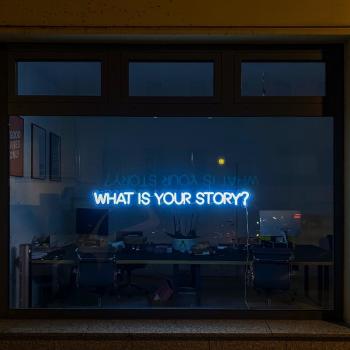This post continues our partnership with Ethix, a publication of the Center for Integrity in Business in the School of Business and Economics at Seattle Pacific University. Ethix has conducted many inspiring interviews with business  leaders, and we’re excited to feature them here from time to time! Read the previous parts of our interview with Tami Heim, who has worked for both Thomas Nelson Publishers and Borders.
leaders, and we’re excited to feature them here from time to time! Read the previous parts of our interview with Tami Heim, who has worked for both Thomas Nelson Publishers and Borders.
- The business of books in a digital era
- Ambushed by Amazon
- Not very hopeful about the future of bookstores
Role of the Publisher
Isn’t there another problem in the publishing area? As a consumer, I can come to trust a publisher and recognize that the book has had an editor, been carefully reviewed, and is judged worthy by some standards. When I am confronted with a large collection of self-published books, how do I sort through to find the gems?
We live in a wired world. People are spending 110 billion minutes a month online. Think about what that number means. If you went back in time one billion minutes, you would be back to the time of Christ. People are spending that much time online, in community and in conversation. That’s how and where they find out about books.
We live in a time where word-of-mouth reigns supreme. You are going to trust the people in your network communities more than you’re going to trust any little blurb placed by a publisher on the back of a book. You’re going to care about the reviews of people you trust. A review and recommendation by someone in your community trumps most everything else.
To publish a book today, you must have a great content and a way to connect that content to the people who care about it. Blogging is the most effective way to make an impact. Every time you post an update or share a link on social network, you’re publishing. You are communicating a message and making it known.
The barriers of entry is vanishing and if you self-publish, an author can own his or her content and earn 60 percent to 70 percent margin. This is much richer than the standard 10 percent or 18 percent a person or agent might be able to negotiate from a traditional publisher.
There was a time in our country when we considered ourselves citizens; then we became consumers, and now we are creators. The surge is happening. Bowker [The Official ISBN Agency for the United States, responsible for the assignment of the ISBN prefix to those publishers with a residence or office in the U.S.], in 2009 issued ISBNs for 1.2 million new books, and 78 percent of them were self-published. The rest of them were from traditional publishers who have not seen any growth over the past five years.
That’s why you hear so much about platform and community. There are four essentials required to make it today. To rise above the noise you must have great content, connection, community, and the collaboration. And that’s true regardless of how you publish. Publishers are going to expect it and they’re going to expect you to work hard building your own community.
An abundance of marketing dollars no longer exists because most publishers are still held hostage to the limited shelf space that exists in the bookstores. They find themselves burning through their marketing budgets as they pay a high price for simply placing their books in these stores.
There are a million new titles crashing in on superstores that can only hold at a maximum, 125,000 titles. The real estate for bookshelf space is painfully limited. A publisher could pay anywhere between $20,000 and $50,000 for that book to sit on that shelf for just two to four weeks. And with so many titles available, retailers have no tolerance for titles that don’t move immediately.
Social media is a growing way to get people in different communities excited about a new book and invite them to help maximize the window a book has in a real life bookstore.
Were you able to create a different perspective in your publishing work?
I definitely brought a different perspective. I was responsible for all of publishing, so all of the senior vice presidents of the various publishing groups reported to me. They had all been in publishing most of their professional lives. I brought with me a consumer and retailer perspective. An influence that was more from the outside in than the inside out. Rather than, “We’ve find a great book and we like it just because we like it,” we wanted to understand how it connected to the deep felt needs of our readers. We paid closer attention to the trends in the marketplace and our market share penetration by category.
No other publisher was looking at market share by category. When I started, we had 21 different publishing imprints and many of them were publishing the same kinds of books. So when we evaluated performance, it was puzzling to me. There was redundancy among the imprints, and it was hard to isolate what category of books was truly driving our sales.
Over an 18-month period, we pulled everything apart and reorganized our inventory and publishing by consumer category. Just like customers who go into a store and know what section they want to browse, we started to think about our books by category too.
You know there are three primary ways a person shops a bookstore. Some look at that front table because they want to see what’s hot and new. Others love a certain category or genre and wander over to browse it. Finally there are those crazy about an author and want to see all they’ve written and to make sure they haven’t missed something new. It’s amazing when publishers start to think like customers and publish based on what matters most to them.
But I still find books when I walk into a bookstore. I see a title from an author I have never heard anything about. I pick it up and I read it and say, “Wow, that’s great.” Does this kind of serendipity go away in this more direct marketing business world?
Yes and no. Yes, serendipity can be at risk as retailers keep inventories low. No, because you will see titles moving in and out at a faster pace. The days of being surrounded by full shelves with amazing depth in any one category are basically gone. I remember a survey once that revealed that 89 percent of the customers who came into a book superstore did so because they wanted massive assortment, but only 25 percent had a specific title in mind. Clearly serendipity was part of the magic and draw.
Stay tuned for future posts about whether we all have shorter attention spans and why Who Moved My Cheese might be the future of publishing. Kind permission is granted by Seattle Pacific University and the Institute for Business, Technology, and Ethics for the use of this material from Ethix magazine, where it first appeared January 2012. Image: Pixabay.














